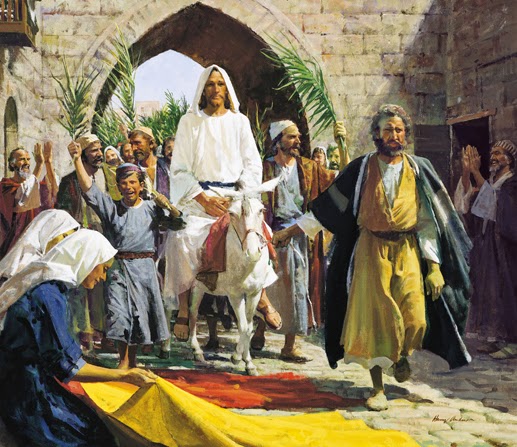With the exception of three years in Salt Lake and three years in San Diego, I've spent my life in areas dominated by orchards. At the young age of thirteen, my very first job was picking cherries in orchards a few miles from my house. We were paid five cents a pound, and on a good day we could pick 100-120 pounds of cherries. ($5.00 or $6.00 for a half-day of work. Hmm, that's about the same as I get paid to teach college-level writing if my grading time is factored in.)
In my teens, I worked in the cherry-sorting plant in the summer, picking branches, leaves, and disgusting green hornworms off a conveyor belt loaded with pie cherries that had been shaken off the trees and were destined to become cherry pie filling and maraschino cherries. After three forty-hour weeks, I was paid what to me was the amazing sum of about $500. I was definitely moving up in the world.
When I was a college student at BYU, we had occasional apple-picking activities at a church-owned welfare farm. We worked for free, and yet somehow that was ever so much more fun than my cherry-picking days.
Then I got married and lived in two cities without an Orchard Presence. After a six-year hiatus from fruit orchards, my husband and I moved our little family to Redlands, California. The first orange grove was planted there in 1882, pretty close to the time the city was founded, and by 1930 there were 15,000 acres of orange groves in and around Redlands. Today only a few thousand acres of groves remain, but we still consider ourselves an "orange city." My husband and I, like many of our neighbors, have navel and mandarin oranges, lemons, and limes growing in our yard.
I had always envisioned the Mount of Olives as a large, stand-alone hill covered with trees, something like the avocado groves of Southern California that are often planted on hills, or like the olive groves we have seen in Italy. However, the Mount of Olives is the middle of a three-peak range, with Mount Scopus on the north and the Mount of Corruption (which I had never heard of) to the south, and while groves may have once covered its slopes, the trees are more limited now. For the last 3,000 years, its other major use has been as a Jewish burial ground, and the cemetery today contains as many as 150,000 graves.
In my teens, I worked in the cherry-sorting plant in the summer, picking branches, leaves, and disgusting green hornworms off a conveyor belt loaded with pie cherries that had been shaken off the trees and were destined to become cherry pie filling and maraschino cherries. After three forty-hour weeks, I was paid what to me was the amazing sum of about $500. I was definitely moving up in the world.
Then I got married and lived in two cities without an Orchard Presence. After a six-year hiatus from fruit orchards, my husband and I moved our little family to Redlands, California. The first orange grove was planted there in 1882, pretty close to the time the city was founded, and by 1930 there were 15,000 acres of orange groves in and around Redlands. Today only a few thousand acres of groves remain, but we still consider ourselves an "orange city." My husband and I, like many of our neighbors, have navel and mandarin oranges, lemons, and limes growing in our yard.
 |
| Redlands orange grove, May 2015 |
A half-hour up the mountain from Redlands is Oak Glen, a small farming community full of U-Pick orchards. We used to go there to pick fruit with our kids in the summer, and we especially loved the raspberry patch. I confess that my kids ate at least every other berry that they picked.
I give all this background as a possible explanation for why I was so taken by the Mount of Olives. I am drawn to orchards and groves. They are part of my past and my present. In my life they have been places of hard work, friendship, and peace.I had always envisioned the Mount of Olives as a large, stand-alone hill covered with trees, something like the avocado groves of Southern California that are often planted on hills, or like the olive groves we have seen in Italy. However, the Mount of Olives is the middle of a three-peak range, with Mount Scopus on the north and the Mount of Corruption (which I had never heard of) to the south, and while groves may have once covered its slopes, the trees are more limited now. For the last 3,000 years, its other major use has been as a Jewish burial ground, and the cemetery today contains as many as 150,000 graves.
 |
| View of the Jewish Cemetery on the Mount of Olives as seen from the southern wall of the Temple Mount |







.JPG)

.JPG)
.gif)




.JPG)
